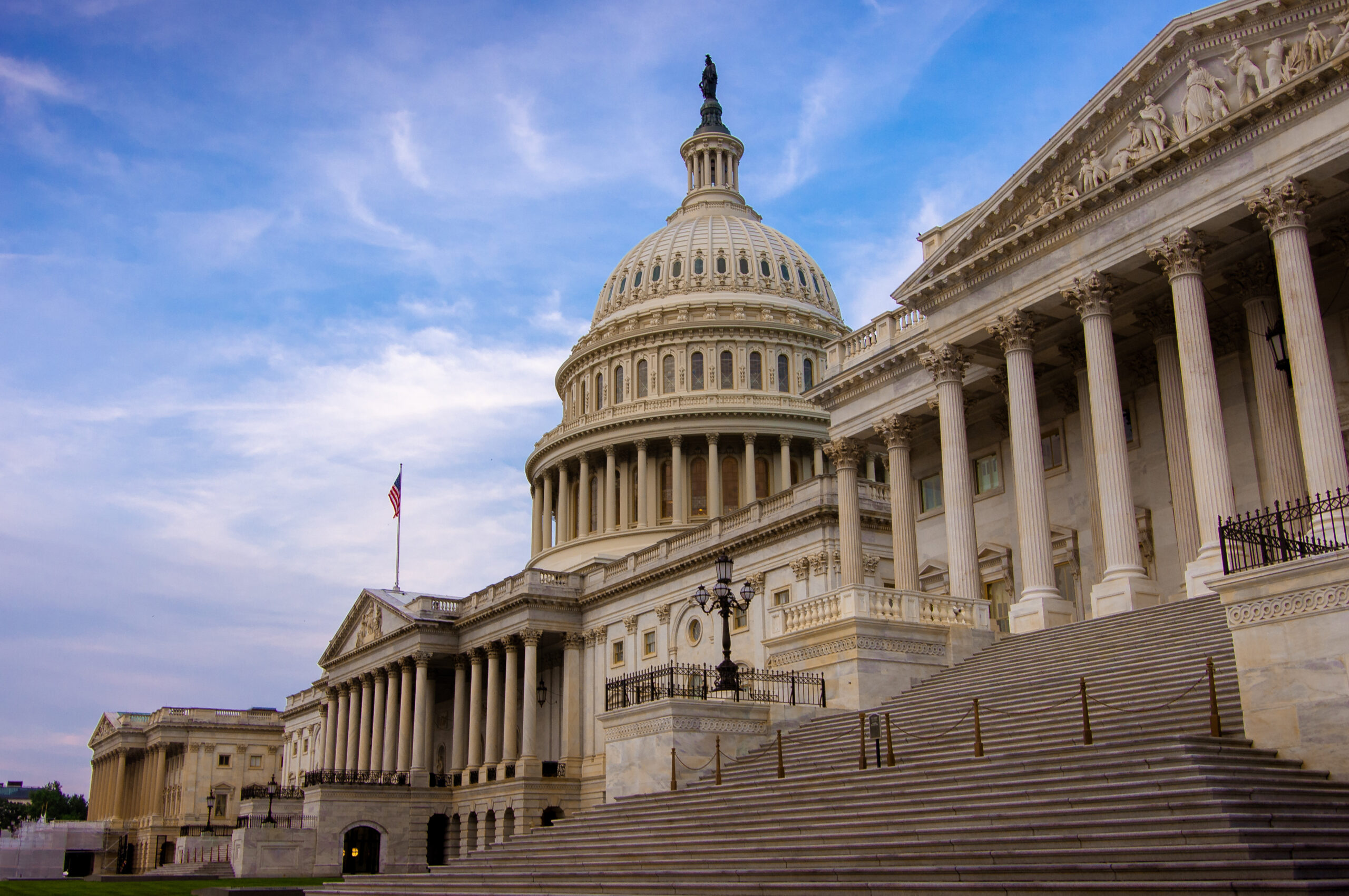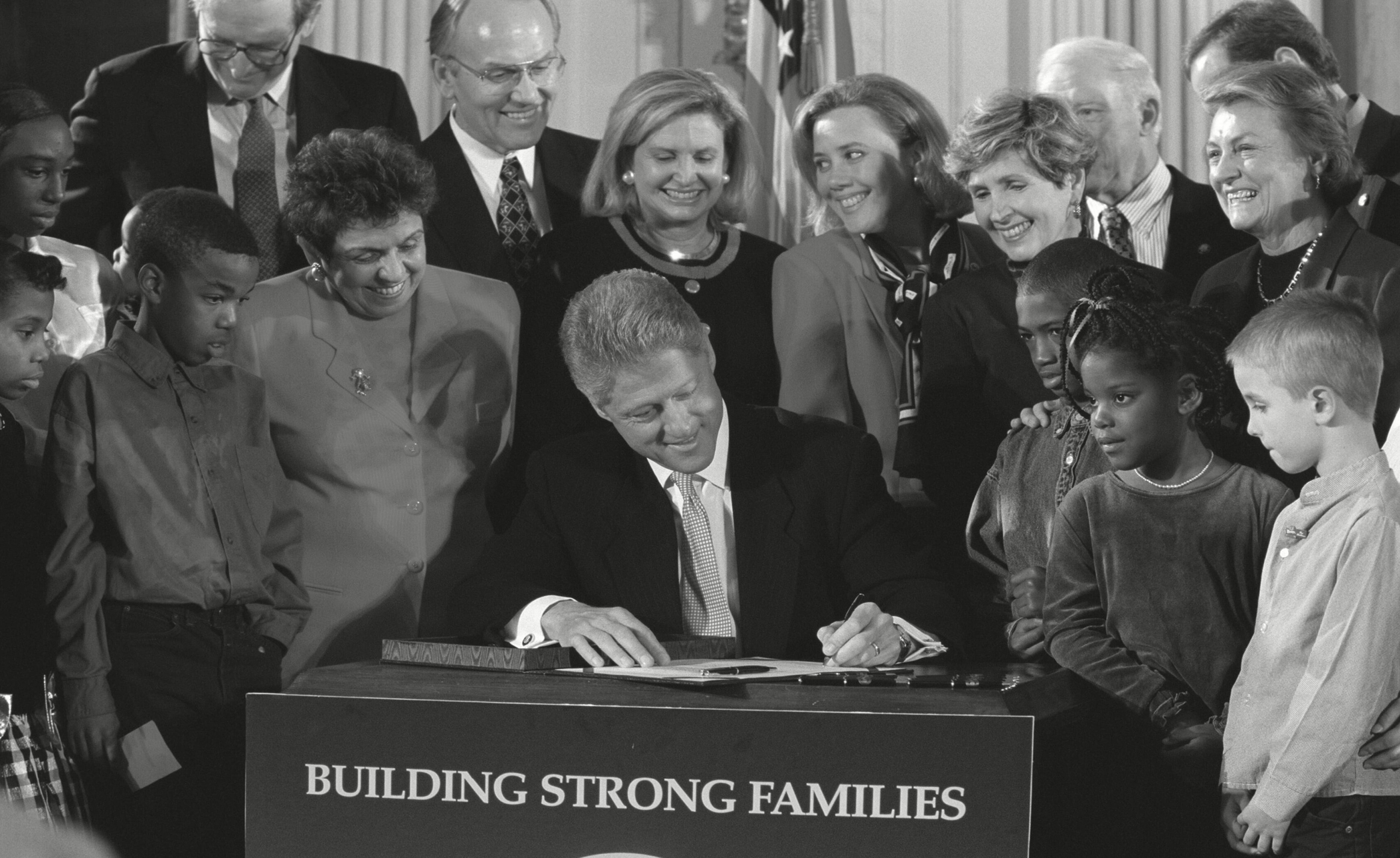The Real Problem of Intercountry Adoption
Adoption Advocate No. 125
Adoption.
The real problem of intercountry adoption is that there is too little of it.
Adoption is the only institution whereby unparented children become legal daughters and sons by force of a deliberate decision of a judicial or other state authority.
Where the unparented child and the prospective parent reside in the same country, domestic laws alone govern adoption. However, both national and international laws must work together to constitute the filial-parental relationship when the unparented child and the prospective parent reside in different countries, whatever their nationalities. The Hague Convention of 1993 on the Protection of Children and Co-operation in Respect of Intercountry Adoption—misguided in its interpretation and enforcement—is the principal international law devoted to intercountry adoption.
Some years ago, a joint report by UNICEF and other agencies estimated the number of double orphans to be sixteen million in Africa, Asia, and Latin America alone.1 Since then, conflict and disease will almost certainly have increased this number. But, of course, the number of children who are unparented is much greater than the number of double orphans. And of the tens of millions of unparented children globally, an estimated 10–14 million are committed to institutions. Whether or not institutionalized, the unparented are subjected to life-altering, and often life-ending, deprivations.
The predicament of unparented children around the world is the greatest humanitarian and human rights crisis of our time. The legal institute of adoption is a marvelous gift to humanity, for it is the only permanent solution to this crisis. And intercountry adoption is an essential component of this solution.
Indeed, in light of the rise in intercountry adoption throughout the latter half of the last century and up until about 2004, there was hope that every year increasing numbers of unparented children would become daughters and sons through intercountry adoption. It was also hoped that as with other fine ideas, a vibrant culture of adoption would take root around the world under the example of intercountry adoption. The much hoped for resulting scenario would be that of family unifications (rather than the limited, genetically reductionist, and potentially child-endangering notion of family reunification) on a global stage, with in-country and intercountry adoptions providing homes for all unparented children.
Who would oppose this ideal?
Adoption Prejudice
Who would have adoption prejudice?
Only those prepared to pay an immense intellectual and moral price can be oblivious to the harmful exclusion, deprivation, and humiliation of unparented children. Unfortunately, too many in government, international organizations, and in the child welfare arena more broadly are willing to pay this price. Behind their attitude lies adoption prejudice.
Adoption prejudice explains the still prevailing global resistance—when not an all-out opposition—to adoption in general and intercountry adoption in particular.2 A resistance often found even where one would reasonably expect to find enthusiastic and committed support for adoption.
Of course, prejudice against adoption is not new, having plagued the ancient versions of the institution. In the modern era and up until a few decades ago, adoption, when disclosed outside the private realm of the family, amounted to a public confession of infertility on the part of parents, and carried the stigmas of rejection and second-class status for adopted children. In comparison, adoption prejudice today is stealthier, but its prints are everywhere in adoption law and attitudes.
The newest version of adoption prejudice is stealthier because it hides under charitable sensibilities and truncated human rights rhetoric. I return to this point later, but first consider two examples of adoption prejudice manifestation.
In one example, it is positively affirmed as a source of status and success that healthcare corporations and professionals worldwide profit from their reproductive services and products. It is estimated that they will reach combined revenues close to 20 billion dollars this year alone.3 In contrast, it is widely considered a moral wrong and a source of social harm if professionals and organizations held to the highest standards of conduct provide fee-based intercountry adoption services and prosper doing so.
In another example of adoption prejudice, despite the much greater risk of abuse and neglect of children by biological as compared to adoptive parents, no one advocates for a moratorium on biological reproduction as an acceptable means of addressing the millions of cases worldwide every year of neglect and abuse of children by their progenitors. In contrast, one negative headline is often enough to lead to calls for adoption delays (under the favored language of “additional adoption safeguards”) or adoption shutdowns (under the favored language of “adoption moratorium”). One could go on and on with examples of contemporary adoption prejudice.
History and the prevailing paradigm of thought about adoption explain the power, resilience, and surreptitiousness of contemporary adoption prejudice.
Historically, population was considered the most important natural resource of nation-states and other independent political units. Polities sought to draw soldiers and laborers from the largest possible population. The more children, the greater the population; the greater the population, the more powerful a polity. Post-colonial sensibilities reconceived of this natural resources approach to children by reducing them too often to carriers of race, religion, ethnicity, or culture. It took a couple of decades for this new objectification of children as natural resources to catch up with the hopeful growth of intercountry adoption, but when it did, it wrought havoc on children whose only chance to be parented was adoption.
However, that regress in the progress of adoption might had been averted were it not for the paradigm of thought that to this day presides over the institution of adoption.
For most of its history, adoption developed under the uncontested influence of adult-centered and community-centered utilitarian outlooks. (Adoption is to serve the interests of adults—birth parents, adopters, and their communities—including their economic, political, and psychological interests. This was occasionally tempered by charitable impulses: the welfare interests of adoptees are to be sought when compatible with the interests of adults and communities.) I have elsewhere named this paradigm of thought in adoption the consequentialist-cum-charity paradigm.4
A major problem of this paradigm is that it fails to fully consider the child as a person, as a full-fledged subject of fundamental rights. I return below to this problem and its solution.
The delusion of contemporary opposition to intercountry adoption is that the charitable impulses in adoption history have finally conquered the consequentialist promotion of the interests of adults and communities. The contrary is true. In the current adoption paradigm, the interests of adults and communities conquered from within the charitable impulses in adoption. The mechanism of this conquest-from-within was the mobilization of the language of human rights to cover the operation of attitudes, policies, and laws that maximize the interests of adults and of political, ethnic, and cultural communities against the inherent dignity of each unparented child as a subject of fundamental rights.
People get away with intercountry adoption prejudice and its nefarious consequences for children because the consequentialist-cum-charity paradigm is encapsulated into a narrative which uncritical acceptance has made widely predominant.
Thus here we are. Adoption prejudice tragically leads to the condemnation of unparented children to institutions, the streets, and to abusive domestic or quasi-domestic relations. Institutions and the streets are bad for children. Bad also is the existential limbo of uncertain status in which children often find themselves in extended family or community placements. Around the world, this kind of placement tends to mean no more than unprotected domestic labor under parental-like authority.
The Current Narrative
Adoption prejudice manifests as local variations of a global constant. The current narrative, reflecting the consequentialist-cum-charity paradigm mentioned above, is the official discourse of the global constant. It preaches:
Led by subconscious or unconfessable liberal selfishness or religious proselytism, the white middle-classes of wealthy North-Atlantic nations roam and ravage the world eastward and southward in search of children to adopt. The individual zealousness and combined financial resources of these colonial trophy-collectors taint all they touch. Birth parents are defrauded, suborned, or coerced; children are robbed of their opportunity to grow where and with the human group they belong in by birth; cultures are deprived of precious subjects to carry them further; and poor countries are depleted of their most important resources. The domestic political clout of the trophy-collectors and the geopolitical clout of their respective governments make it so that most countries east and south must put up with intercountry adoption, but the institution must be contained everywhere and dismantled anywhere an opportunity to do so arises. Those in the forefront of intercountry adoption containment and dismantlement are human rights and state sovereignty champions.
We would be hard-pressed to imagine the scale of the current humanitarian and human rights crisis of unparented children without the ascendancy of this factually false, morally wrong, and cruel in its effect narrative.
Facts, Moral Clarity, and the Suffering of the Unparented
Let us concede that in far too many cases families (again, much more so in the case of progenitors) fail miserably in the discharge of their fiduciary duties toward children. Yet, the fact—amply confirmed by social, developmental, and bio-medical sciences as well as ordinary experience—remains that no other type of institution compares to a good family (and good families come in different shapes and from different socio-economic strata) when it comes to the care and nurturing of children.
The reason why this is the case tends to elude anyone taking a materialistic approach to the requirements of successful upbringing. Indeed, other types of institutions, including well-funded orphanages, sometimes provide better access to food, shelter, healthcare, safety, and sundry conveniences than the typical family in many parts of the world. What sets good families apart and makes them easily superior to even the best among other kinds of institutions, and explains their success in upbringing, is that they parent. That is, in good families, the tasks involved in upbringing are mediated by love. As G.W.F Hegel insightfully pointed out, “the family has as its determination the spirit’s feeling of its own unity, which is love.”5
Love matters because it counter-balances the vulnerability of children vis-à-vis those who control what they need to grow and flourish. Ultimately, it is on adults close and far—whether acting in their capacities as parents, extended family, or agents of the state or broader society—that children depend.
Unless and until parental love intervenes, children’s dependence translates daily into the unmediated experience of vulnerability—a crushing psychological predicament for anyone. The point is not that love sugarcoats dependence, although it certainly does that too. Rather, love alters the experience of vulnerability by changing, on one side, the motivations and considerations of the adults that control the resources children need and, on the other, the way children concretely experience their dependence.
When loved by a good parent, objective vulnerability is subjectively experienced by children as care, protection, trust, and affection. This subjective experience offers the best environment for the expansion and development of children’s potential. Not a small accomplishment for love.
In other words, parental love transmutes caregiving into parenting. Love creates the kind of conservatory in which the share of human capabilities each person is endowed with can have a fair chance of flourishing. It is in the experience of profound and unconditional love that children find the terra firma that assures them of their place in the world, and where their own sense of limitation and vulnerability is transformed into self-confidence and an appetite for the future as an inviting frontier of open possibilities.
We all come to the world embodied—that is, as biological structures. There is of course a deep kind of unavoidable vulnerability that comes with that. Individuals and many societies respond to this unavoidable vulnerability by placing the minimum requirements for life maintenance at the top of their priorities. That conceded, it is essential to acknowledge that biological embodiment does not exhaust who and what persons are; that there are human endowments that can and should be protected and nurtured. When that happens, individuals, and humanity as a whole, experience the kind of transcendence upon which the meaning of each person’s life depends. Because of their importance in placing love at the center of the experiences of biological embodiment and corresponding vulnerability, it is understandable why good families occupy a privileged position in the biographical as well as the sociological dimensions of life.
Relatedly, children’s potentials entrusted to families condition the personal meaning in and conscious enjoyment of fundamental rights during an individual’s lifespan. Hence, fundamental rights’ meaning and enjoyment have one major presupposition: that individuals possess at a minimum the evolutionary endowments of reason, normativity, love, creativity, judgement, communication, play, hope, plan, and enthrallment. When these capacities fail to be present minimally for any individual, meaning in and enjoyment of fundamental rights become deeply challenging even where the provision of those rights is in principle secured.
Sometimes the frugal possession of human capacities is not attributable to human fault. In other cases, however, that dearth is the result of human action and omission, as in the case of institutionalization of unparented children. When the latter occurs, it constitutes one of the first and deepest forms of disrespect a person can suffer of her human rights.
It is not difficult to connect my arguments. By interjecting a buffer of love between children and the harshness of the world, good families parent, thus creating the best milieu for children to grow and flourish in. Hence, obstacles to growing up in good families attributable to individuals and organizations constitute a serious breach of children’s human rights.
Now we come full circle. For the unparented, the only access to parenting is through adoption. This fact gives rise to negative and positive human rights obligations. Negatively, states and international organizations are under the obligation not to create unjustifiable obstacles to adoption, domestic and intercountry equally. Positively, those entities are under the obligation to vigorously promote urgent access for the unparented to family unification concomitantly through intercountry and domestic adoption. Morally, these negative and positive obligations bind everyone everywhere.
For law, morality, and policy, it makes a world of difference to approach the humanitarian and human rights crisis of global unparenthood from the discerning perspective of the human rights of the child rather than from the consequentialist-cum-charity adoption paradigm. The consequentialist-cum-charity adoption paradigm and its narrative turn the unparented into an instrument of blood, soil, race, culture, heritage, or politics in the name of saving them. Thus instrumentalized, children are separated and treated unequally in what amounts to a global apartheid of the unparented. Family unification through adoption as a human right is their only hope.
The Human Rights of the Unparented
The consequentialist-cum-charity adoption paradigm and its narrative about intercountry adoption summarized above must be set out of the way of intercountry adoption and into the annals of shame that history fills with other types of prejudices and their consequences. In its place, the human rights of the unparented paradigm will rise, and with it a new narrative of the dignity of each child in intercountry adoption:
There is too little intercountry adoption in the world. Millions of unparented children worldwide need and long for permanent family unification. Ready to encounter them are prospective parents who have broken free from genetic and tribalist reductionisms. This is a global movement of family unification. Crossing nations and continents, this movement claims the human right of the unparented to urgent adoption facilitation and vigorous adoption promotion, a human right that serves also as a vessel for our hopes for a future of understanding and solidarity around the world. Those in the forefront of intercountry adoption facilitation and promotion are champions of the human rights frontier to dismantle the global apartheid of the unparented.
References
- Children on the Brink 2004: A Joint Report of New Orphan Estimates and a Framework for Action. Available here: https://www.unicef.org/publications/index_22212.html
- Even in countries like the United States where in-country adoption now enjoys general support in the population, intercountry adoption is still a taboo for a critical mass of the population and institutional actors in the public and private sectors.
- https://www.bccresearch.com/market-research/healthcare/human-reproductive-technologies-hlc017d.html
- Finding Home in the World: A Deontological Theory of the Right to be Adopted, 55 N.Y. L. Sch. L. Rev. 701 (2010–11). Available at https://papers.ssrn.com/sol3/papers.cfm?abstract_id=1839477
- G. W. F. Hegel, Elements of the Philosophy of Right (Cambridge: Cambridge University Press, 2000), p. 199.



